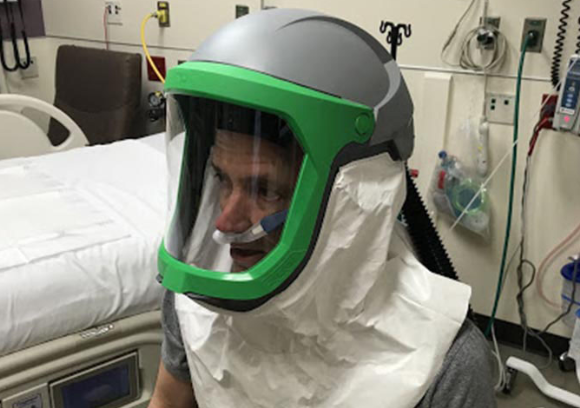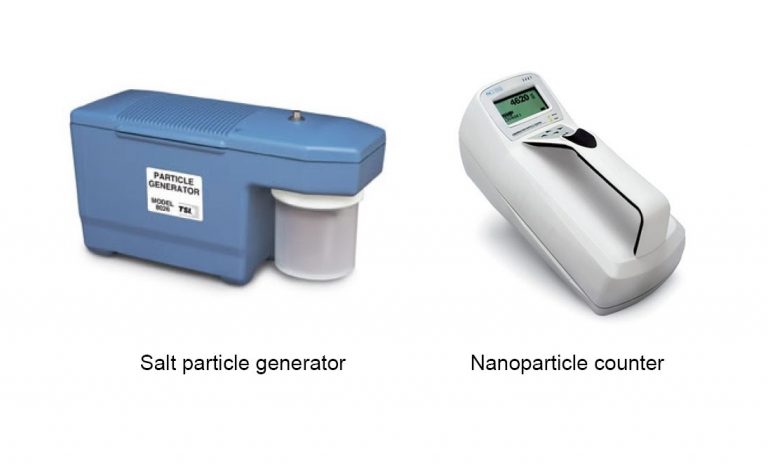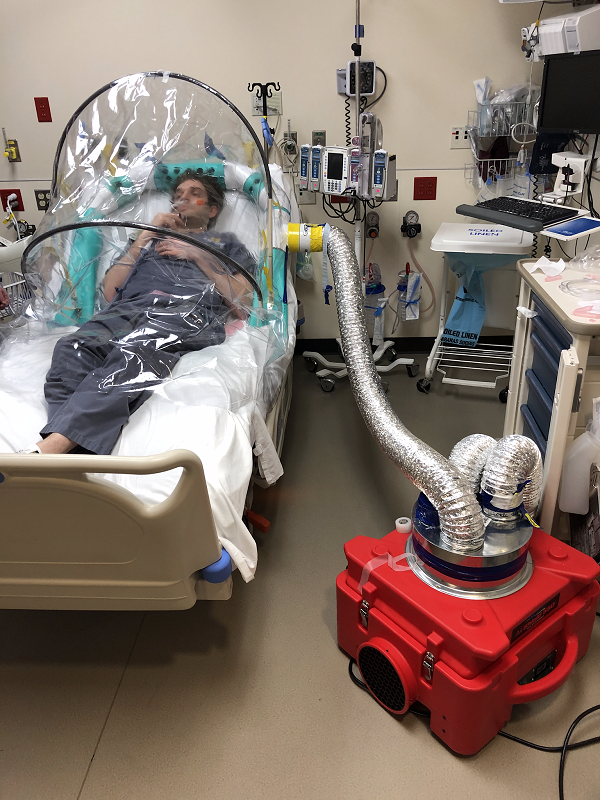What does a Certified Industrial Hygienist (CIH) do? They protect people from all kinds of hazards where they work. They are trained to anticipate, recognize, evaluate, and control workplace hazards. Recently, Jon Lillemon, one of 8 CIHs with U-M Environment, Health and Safety, found himself helping engineers and medical clinicians test two devices to support COVID-19 treatment.
The researchers had teamed up to test an idea: could patients wear a helmet-style respirator or could their bed be enclosed in a clear plastic tent to protect healthcare workers? If so, these devices could potentially transform any hospital bed into a negative pressure room, which keeps particles like the coronavirus from escaping. In addition, as portable devices, the helmet and tent maintain a negative pressure environment even when staff need to transport a patient. (More details are available in this MHealth Lab article.)

The hospital safety team reached out to EHS looking for a way to test whether the helmet and tent could keep the virus from spreading. Initially, they wanted to test for the COVID-19 virus, but after a little research, Jon learned that it would be difficult and risky. It takes several days to get results, it’s hard to be sure the virus wasn’t already present, and it could put people at risk. “So I gave them the idea of using a surrogate method to test more safely,” Jon said.

The method was to use a sodium chloride salt generator, which emits tiny salt particles into the air for detection by a nanoparticle counter. The method and equipment are familiar to EHS safety staff, who use the same concept for respirator fit testing. Similar methods are also used by EHS technical staff to test fume hoods, biosafety cabinets, and other containment devices to ensure they aren’t releasing anything that could harm people.
Jon brought the salt generator and nanoparticle counter to the hospital, where he worked with the researchers to develop a method to test the helmet and tent.
After determining background levels of nanoparticles in the air, they turned on the helmet fan and started generating salt particles inside the helmet. “Normally a respirator protects you from particles outside the hood,” Jon explains. “This works the opposite: it takes the air inside the helmet—the patient breathing out particles—and filters it to protect people outside.” If they found that the level of salt particles outside the helmet rose, they’d know it wasn’t containing the virus.


